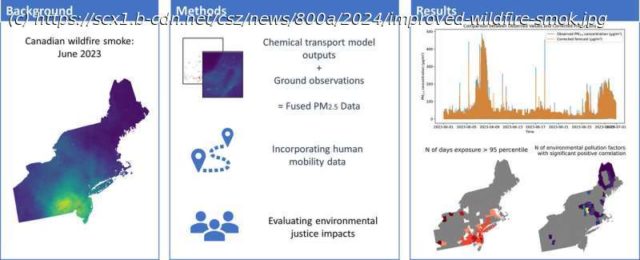The Canadian wildfires of June 2023 exposed a large portion of the Northeastern United States to unprecedented levels of smoke. A new model that combines wildfire smoke forecasts and data from ground-based sensors may help public health officials plan targeted interventions in areas most at risk for the negative health effects of unexpected smoke events and air pollution, according to a team led by Penn State scientists.
The Canadian wildfires of June 2023 exposed a large portion of the Northeastern United States to unprecedented levels of smoke. A new model that combines wildfire smoke forecasts and data from ground-based sensors may help public health officials plan targeted interventions in areas most at risk for the negative health effects of unexpected smoke events and air pollution, according to a team led by Penn State scientists.
The researchers reported their findings in the journal Science of the Total Environment.
« Statistical analyses suggest that situations like last year’s Canadian wildfires, where smoke travels long distances to affect the Eastern United States, may become the norm, » said lead author Manzhu Yu, assistant professor of geography at Penn State.
« Our research can help public health officials in urban and rural areas plan targeted interventions for communities at higher risk of harmful air pollution during wildfire smoke events. »
The researchers focused on the periods between June 6–8 and June 28–30 2023, when weather conditions and a coastal storm pushed large amounts of smoke from Canada into the Northeastern United States. They used data from ground-based sensors and a form of artificial intelligence called deep learning to improve a weather forecasting model from the National Center for Atmospheric Research.
The model—the Weather Research and Forecasting model with Chemistry, or WRF-Chem—provides hourly data on surface concentrations of fine particulate matter (PM 2.5). Found in wildfire smoke and other forms of air pollution, these tiny particles can reach the lungs and cause health issues.
Home
United States
USA — IT Improved wildfire smoke model identifies areas for public health intervention






